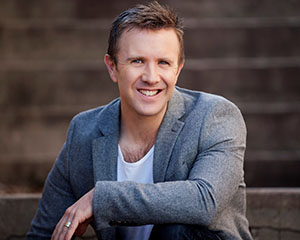Principals flourish with program
Who would be a school principal? Over worked, under pressure, time poor… being a principal is tough, that’s a given, but pinning down exactly how to make the job easier is harder still.
For Bob Willetts who heads up Berry Public School in NSW, the issue came to a head when he attended a network meeting and was told that there was a raft of new compliance requirements the principals gathered were required to meet; more work, no extra time, more stress.
Clearly something needed to be done so Bob Willetts contacted Dr Adam Fraser, who’s a performance researcher, keynote speaker and author and asked him to develop a badly needed wellbeing program for principals.
Deakin University was brought in and together they made the first steps towards creating the Flourish Project, starting with identifying what exactly it is to be a principal today and what they were facing.
“The first step was to study how the job has changed, how principals spent their time and what the impact of the job was on them. From there we sat down with Bob and other principals and presented our ideas to them. With their help we moulded those ideas into a program,” Adam Fraser says.
The Flourish Project is delivered in three parts. The first is research; participants diarise their work, complete surveys and undergo interviews with the convenors.
The principals are then put through a 12-month program which consists of one face-to-face workshop every term. The principals make friends and receive support and information from the Flourish Project. All are reinterviewed at the end.
Between the research component and the workshops, participants in the Flourish Project were able to create a very personalised plan for behaviour change for themselves.
The diaries generated provide a detailed picture of their use of time and their experience as a principal. Every entry begins with what each has done after they left work and when they returned, with a view to eventually creating a separation between work and home life.
Foremost, the process revealed that principals were spending a disproportionate amount of time on administrative and communication tasks, planning and staff development. An impression of how they were feeling at those times; their energy levels and mood was also developed.
“We were able to identify tasks that lit them up, put them in flow and energised them and tasks that sapped energy,” Willetts says.
One of the most common and energy-draining problems was how many times the principals were interrupted and had to switch tasks while they were trying to concentrate on another piece of work.
The findings were an eye opener for Fraser and the other researchers who work outside the teaching profession.
“This was the broadest job that we had ever seen. Principals are across more roles and more tasks than any job we had ever come across.
 “Generally, principals were very unaware of where their time went so we had them estimate where it was going and then measured it. Most underestimated the amount of admin they did by 200%.
“Generally, principals were very unaware of where their time went so we had them estimate where it was going and then measured it. Most underestimated the amount of admin they did by 200%.
“The admin tasks generally drained the principals but when they were actually leading and interacting with students and parents was when they felt the best about themselves and their jobs,” Fraser says.
It came down to identifying the best times of the day to complete tasks and whether it was up to them to complete those tasks or whether they could be delegated.
Fraser encouraged principals to change the way that they worked to build more time and space to concentrate on leading teaching and learning, being an educational leader rather than an administrator.
“It's a matter of creating that space by outsourcing, delegating, or saying ‘that doesn’t have to be done right now’, putting the important tasks first, not being a slave to your email, having a plan for what you wanted to achieve each day and prioritising that plan,” Fraser says.
“What we’ve learned is that the job has evolved and the principals have to evolve with that, we’re looking to have them adjust their behaviour to suit this new environment,” Willetts says.
Accessing a peer group to share ideas with has been transformative for many of the principals attending the Flourish Project.
“You put 30 people in a room who are massively under pressure and they naturally form bonds. One of our principals had a staff member she was very close to die around the time of the Flourish Project conference, when she went to her room she heard noise coming through the door and thought she’d gone to the wrong place. As it turned out it was all the other principals from the program waiting for her to lend support,” Willetts says.
In a nutshell, it’s about learning to do more with what you have and using your time and resources more efficiently to create more time for the parts of the job principals find enriching. It’s simple but profound stuff and the results have been dramatic.
There has been a 360% increase in the number of principals coping well, a 160% reduction in the number of principals just coping, a 200% reduction in the number of principals having difficulties coping, a 56% improvement in how positive they are feeling about work and their mindset towards the job.
Of principals who went into the program, 20% arrived with the mentality that they were going to leave the profession because of the stress. That has been turned around; all are now staying and many have won promotions.